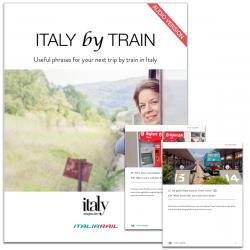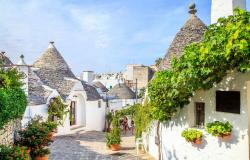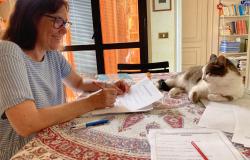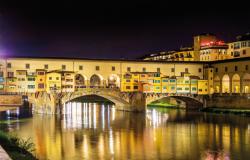Wonders of Italy: Siena's Piazza del Campo
ITA:
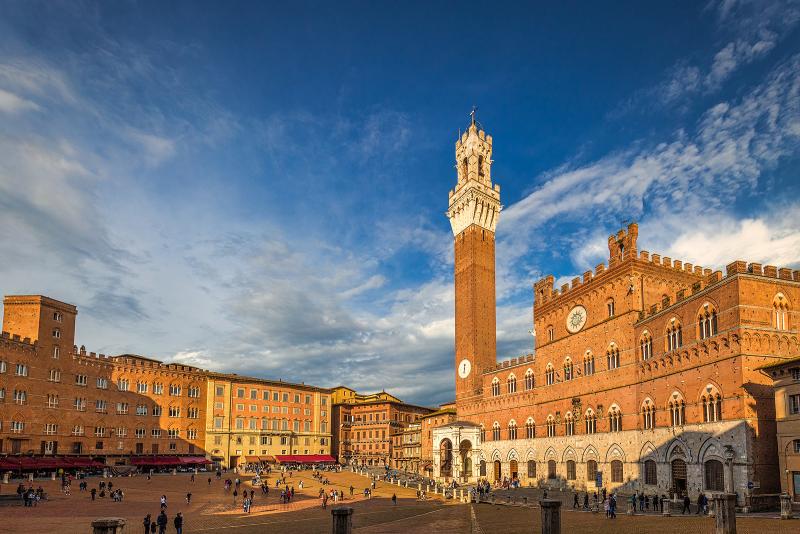
Use player to listen to Italian version
Piazza del Campo is the heart of Siena, its historical soul. It is famous all over the world for its beauty, architectural integrity and unique shell shape. It is a Unesco World Heritage site since 1995, along with all of Siena’s historic center.
In the past, Piazza del Campo was a green area, used to host open-air markets; today, it is the meeting point for the Sienesi, and also the place where the famous Palio takes place twice a year.
Some of the city’s most important monuments overlook the piazza; let’s look at some of them.
Palazzo Comunale: it’s the palace built by the government of the Republic of Siena between 1298 and 1310 as the seat of the ‘Council of Nine,’ the elected officials that governed the city. Brick was used for its construction and its white elements are in marble. Today, it still serves as the Town Hall.
Torre del Mangia: it was the bell tower of the Palazzo Comunale, so called from the nickname ‘mangiaguadagni’ given to its first caretaker, Giovanni di Balduccio, known for being a glutton and therefore squandering his earnings on food (mangia-guadagni = eat earnings away). Built between 1325 and 1348, the Torre del Mangia is among Italy’s tallest ancient towers: at 102 meters high, it symbolically guards and protects the city. The four corners are perfectly oriented in the North-South and East-West direction.
Cappella di Piazza: it’s a marble tabernacle at the foot of the Torre del Mangia, protruding from the Palazzo Comunale. It was built in 1352 to thank the Virgin Mary for saving the city from the plague that struck in 1348.
Fonte Gaia: inaugurated in 1386 amid the citizens’ general rejoicing because it was Siena’s first public fountain (hence the name ‘Gaia' - cheerful), it was decorated between 1409 and 1419 with statues and reliefs by sculptor Jacopo della Quercia, blending Gothic tradition and Renaissance innovations. The ones on display today are copies.
Piazza del Campo è il cuore di Siena, la sua anima storica. È famosa in tutto il mondo per la sua bellezza, integrità architettonica e l’originale forma a conchiglia. È un sito Patrimonio dell'Umanità Unesco dal 1995, insieme a tutto il centro storico di Siena.
In passato Piazza del Campo era un'area verde, utilizzata per ospitare i mercati all'aperto; oggi è il punto di ritrovo dei senesi, ma anche il luogo in cui due volte all'anno si svolge il famoso Palio.
Sulla piazza si affacciano alcuni dei monumenti più importanti della città; vediamone alcuni.
Palazzo Comunale: è il palazzo costruito dal governo della Repubblica di Siena tra il 1298 e il 1310 come sede del ‘Consiglio dei Nove’, i rappresentanti eletti che governavano la città. Per la sua costruzione è stato utilizzato il mattone ed i suoi elementi bianchi sono in marmo. Oggi funge ancora da municipio.
Torre del Mangia: era il campanile del Palazzo Comunale, così chiamato dal soprannome di 'mangiaguadagni' dato al suo primo custode, Giovanni di Balduccio, noto per essere un ghiottone e quindi sperperare i suoi guadagni nel cibo (mangia-guadagni). Costruita tra il 1325 e il 1348, la Torre del Mangia è tra le torri antiche più alte d'Italia: con i suoi 102 metri di altezza, simbolicamente custodisce e protegge la città. I quattro angoli sono perfettamente orientati in direzione Nord-Sud ed Est-Ovest.
Cappella di Piazza: è un tabernacolo marmoreo ai piedi della Torre del Mangia, sporgente rispetto al Palazzo Comunale. Fu costruito nel 1352 per ringraziare la Vergine Maria per aver salvato la città dalla peste che colpì nel 1348.
Fonte Gaia: inaugurata nel 1386 tra l'esultanza generale dei cittadini perché fu la prima fontana pubblica di Siena (da cui il nome 'Gaia' - allegra), fu decorata tra il 1409 e il 1419 con statue e rilievi dallo scultore Jacopo della Quercia, che unì tradizione gotica e innovazioni rinascimentali. Quelli in mostra oggi sono delle copie.





